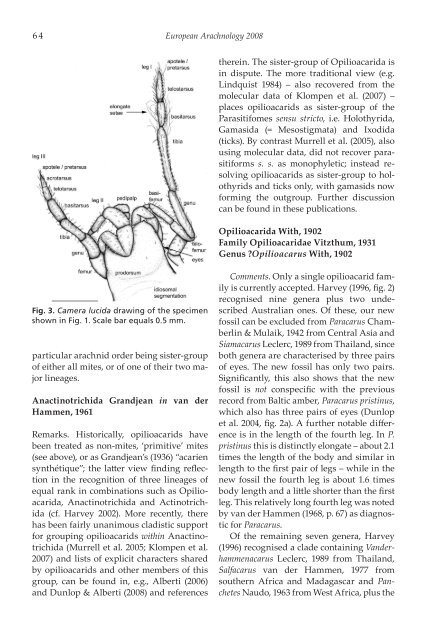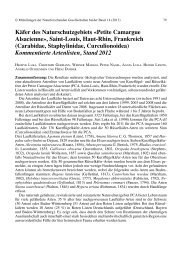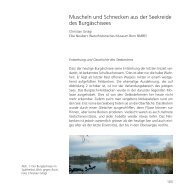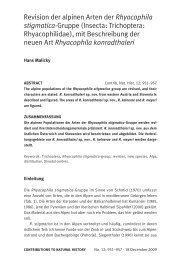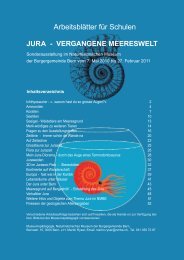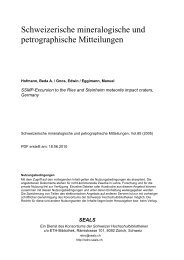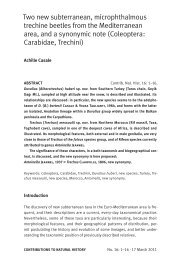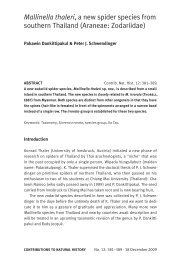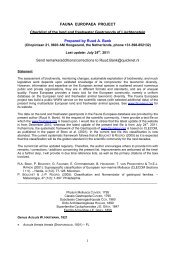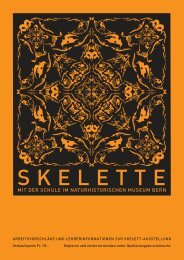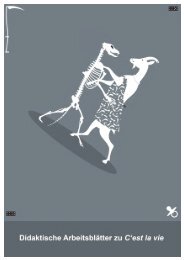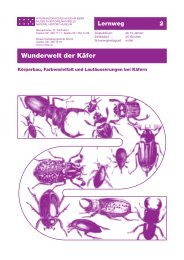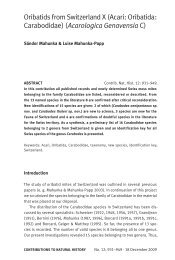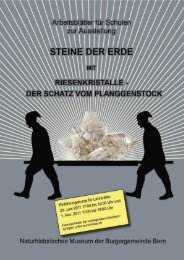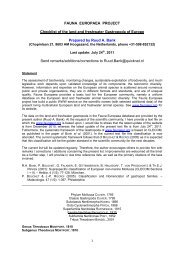Opilioacarus aenigmus Dunlop, Sempf & Wunderlich
Opilioacarus aenigmus Dunlop, Sempf & Wunderlich
Opilioacarus aenigmus Dunlop, Sempf & Wunderlich
You also want an ePaper? Increase the reach of your titles
YUMPU automatically turns print PDFs into web optimized ePapers that Google loves.
6 4 European Arachnology 2008<br />
Fig. 3. Camera lucida drawing of the specimen<br />
shown in Fig. 1. Scale bar equals 0.5 mm.<br />
particular arachnid order being sister-group<br />
of either all mites, or of one of their two major<br />
lineages.<br />
Anactinotrichida Grandjean in van der<br />
Hammen, 1961<br />
Remarks. Historically, opilioacarids have<br />
been treated as non-mites, ‘primitive’ mites<br />
(see above), or as Grandjean’s (1936) “acarien<br />
synthétique”; the latter view finding reflection<br />
in the recognition of three lineages of<br />
equal rank in combinations such as Opilioacarida,<br />
Anactinotrichida and Actinotrichida<br />
(cf. Harvey 2002). More recently, there<br />
has been fairly unanimous cladistic support<br />
for grouping opilioacarids within Anactinotrichida<br />
(Murrell et al. 2005; Klompen et al.<br />
2007) and lists of explicit characters shared<br />
by opilioacarids and other members of this<br />
group, can be found in, e.g., Alberti (2006)<br />
and <strong>Dunlop</strong> & Alberti (2008) and references<br />
therein. The sister-group of Opilioacarida is<br />
in dispute. The more traditional view (e.g.<br />
Lindquist 1984) – also recovered from the<br />
molecular data of Klompen et al. (2007) –<br />
places opilioacarids as sister-group of the<br />
Parasitifomes sensu stricto, i.e. Holothyrida,<br />
Gamasida (= Mesostigmata) and Ixodida<br />
(ticks). By contrast Murrell et al. (2005), also<br />
using molecular data, did not recover parasitiforms<br />
s. s. as monophyletic; instead resolving<br />
opilioacarids as sister-group to holothyrids<br />
and ticks only, with gamasids now<br />
forming the outgroup. Further discussion<br />
can be found in these publications.<br />
Opilioacarida With, 1902<br />
Family Opilioacaridae Vitzthum, 1931<br />
Genus ?<strong>Opilioacarus</strong> With, 1902<br />
Comments. Only a single opilioacarid family<br />
is currently accepted. Harvey (1996, fig. 2)<br />
recognised nine genera plus two undescribed<br />
Australian ones. Of these, our new<br />
fossil can be excluded from Paracarus Chamberlin<br />
& Mulaik, 1942 from Central Asia and<br />
Siamacarus Leclerc, 1989 from Thailand, since<br />
both genera are characterised by three pairs<br />
of eyes. The new fossil has only two pairs.<br />
Significantly, this also shows that the new<br />
fossil is not conspecific with the previous<br />
record from Baltic amber, Paracarus pristinus,<br />
which also has three pairs of eyes (<strong>Dunlop</strong><br />
et al. 2004, fig. 2a). A further notable difference<br />
is in the length of the fourth leg. In P.<br />
pristinus this is distinctly elongate – about 2.1<br />
times the length of the body and similar in<br />
length to the first pair of legs – while in the<br />
new fossil the fourth leg is about 1.6 times<br />
body length and a little shorter than the first<br />
leg. This relatively long fourth leg was noted<br />
by van der Hammen (1968, p. 67) as diagnostic<br />
for Paracarus.<br />
Of the remaining seven genera, Harvey<br />
(1996) recognised a clade containing Vanderhammenacarus<br />
Leclerc, 1989 from Thailand,<br />
Salfacarus van der Hammen, 1977 from<br />
southern Africa and Madagascar and Panchetes<br />
Naudo, 1963 from West Africa, plus the


